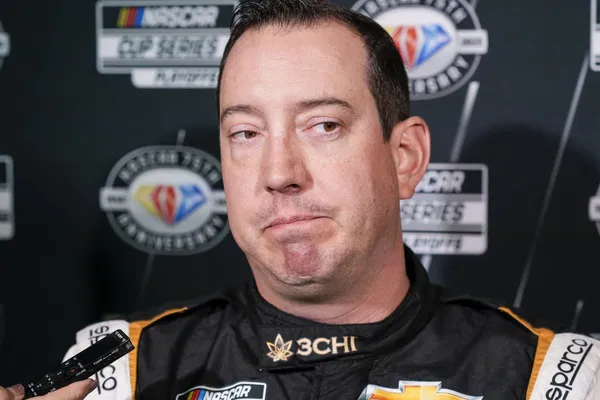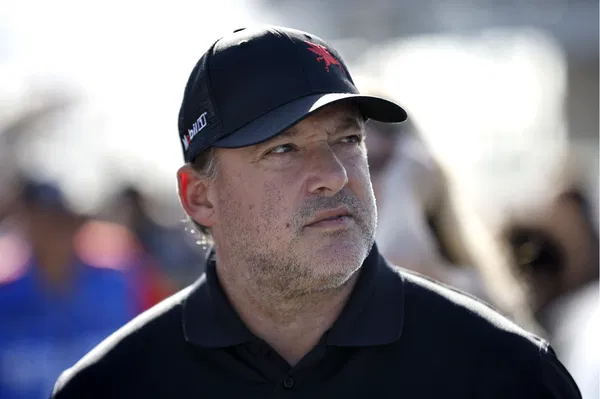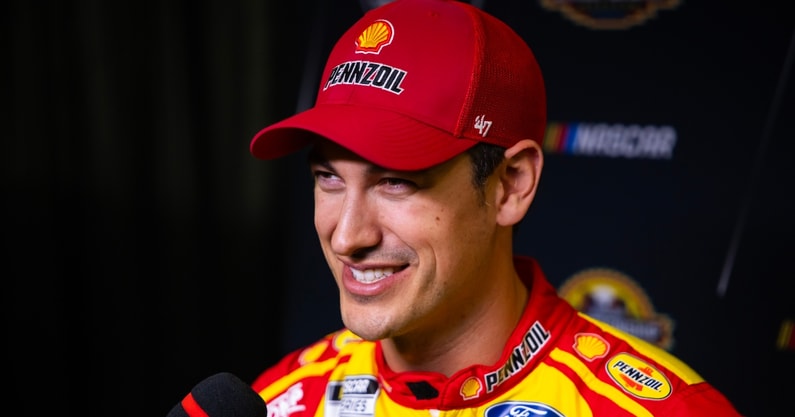NASCAR has often struggled with handling off-track incidents, frequently imposing penalties that seem significant at first but later get revoked. A recent example of this was the case involving Ricky Stenhouse Sr. and a post-race brawl with Kyle Busch at North Wilkesboro Speedway, which sparked debate and controversy among fans.
To recap, Kyle Busch intentionally wrecked Ricky Stenhouse Jr. early in the All-Star race, on lap two. Stenhouse Jr., refusing to let the incident go unaddressed, confronted Busch after the race, landing a punch to his face. What followed was an all-out scuffle, with crew members from both teams joining in. Ricky Stenhouse Sr., the father of the JTG Daugherty Racing driver, got involved in the melee, trying to get at Busch as tensions boiled over.
As a result of this chaos, NASCAR hit Stenhouse Jr. with a hefty $75,000 fine. His father, however, faced a more severe consequence—an indefinite suspension from entering the racetrack. The length of this suspension was unclear at first. However, not long after, an update from motorsports journalist Bob Pockrass revealed that NASCAR had revoked the suspension.
Pockrass announced on X (formerly Twitter), “Ricky Stenhouse Jr.’s dad, who was suspended from NASCAR following the Kyle Busch fight at the All-Star race in May, has been reinstated (which means he can be in the garage/pits during race weekends).” This decision shocked many NASCAR fans, some of whom voiced their displeasure. A number of fans expressed outrage, even going so far as to threaten a boycott if Stenhouse Sr. was allowed to return to the garage area.
Fan reactions were varied and heated. While it’s common to see drivers fight after races, the involvement of a family member raised concerns. For many, the confrontation should have stayed between Stenhouse Jr. and Busch. Some felt it was completely inappropriate for Stenhouse’s father to escalate the situation by physically engaging. One fan, reflecting the frustration of others, posted, “Might as well rename it THUGCAR now smh won’t be watching anymore.”
This situation exposes a deeper issue for NASCAR, which has sometimes promoted race-related conflicts to boost viewership and hype. While fights might bring short-term attention, some fans worry about the long-term damage to the sport’s image. One fan pointed out, “This is exactly why viewership is decreasing. He needs to be banned for life.” They feared that NASCAR’s lenient treatment of such incidents could harm the integrity of the sport.
Another fan raised the point by drawing a parallel to Cody Ware’s case. Ware was initially barred from racing after an arrest for assaulting his girlfriend, but once the charges were dropped, he was reinstated. “Why does @NASCAR always do this? They suspend someone and months down the road reinstate them even though they started it? Same thing in the past with Cody Ware, Alvin Kamara etc.”
Despite the strong reactions, there were also fans who believed NASCAR’s decision wasn’t as outrageous as it seemed. Some pointed out that NASCAR has let drivers off the hook for more serious offenses. One fan recalled the 2011 incident where Kyle Busch caused a major stir during the Truck Series race at Texas Motor Speedway by intentionally wrecking Ray Hornaday. Busch was fined $50,000 and banned from the Cup race that weekend, but no lifetime ban was enforced. “People acting like he should be banned for life. With that logic, Busch should still be suspended for the Hornaday deal.”
A few fans welcomed Stenhouse Sr.’s return, provided he behaves appropriately in the future. One comment read, “Welcome back! Keep your hands in your pocket.” Others were confused by the timing of the reinstatement, thinking it had already happened. “Bro what, I thought he got reinstated back at like Michigan or Richmond,” one fan commented.
This controversy brings up a crucial question for NASCAR: Does the sport need stricter policies when dealing with off-track incidents? While NASCAR doesn’t encourage fights, the way these altercations are handled—and sometimes seemingly encouraged—leaves many fans questioning the consistency and effectiveness of its disciplinary measures. If NASCAR aims to maintain its credibility and appeal to a wider audience, it may need to reconsider how it deals with situations like this in the future.
Ultimately, while the reinstatement of Stenhouse Sr. has stirred debate, it is just the latest chapter in NASCAR’s ongoing struggle to balance fan engagement with sportsmanship and fairness. Whether or not stricter regulations are the answer remains to be seen, but one thing is certain: NASCAR fans are paying close attention to how these issues are handled.




